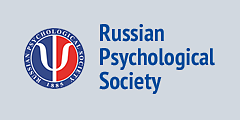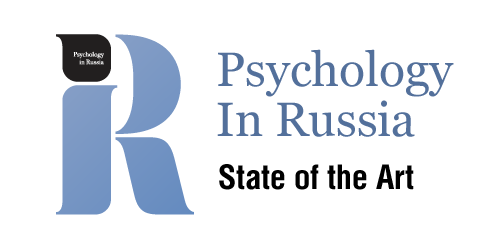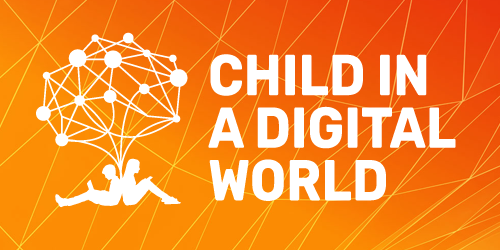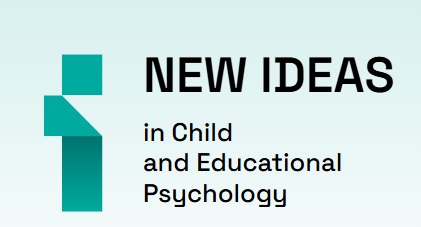Glotova, G.A.
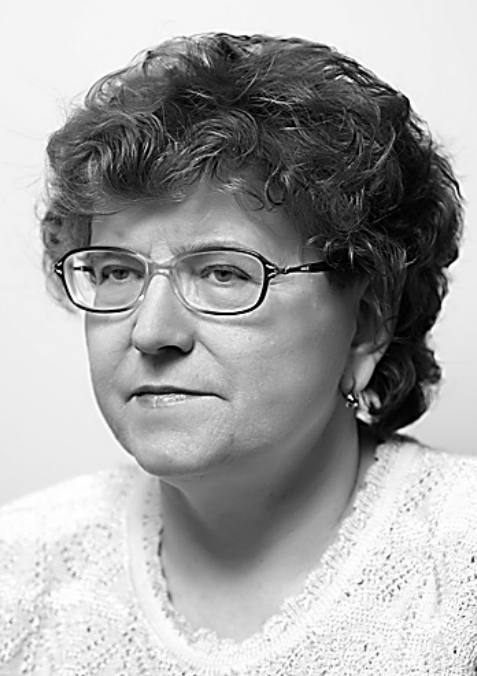
Dr. Sci. (Psychol.)
Professor, , Leading Researcher at the Laboratory of Educational Psychology, the Department of Psychology of Education and Pedagogy, Faculty of Psychology, Lomonosov Moscow State University.
-
Psychometric Properties of the Russian Version of the "Sports Anxiety Scale"Lomonosov Psychology Journal, 2025, 4. p. 359-383read more667
-
Background. Anxiety is one of the main factors that have a negative impact on competitive results in athletes. The specifics of sports activities require to apply diagnostic methods that, on the one hand, are compact, and on the other hand, provide high psychometric indicators in assessing psychological characteristics, including anxiety. In this regard, the development of a modern and reliable method for testing sports anxiety seems necessary and relevant.
Objective. The aim is to test of the questionnaire "Sports Anxiety Scale" on a Russian-speaking audience of athletes of various sports and age categories.
Study Participants. The study involved 297 athletes, including 188 men and 109 women, age ranging from 18 to 63 years (M = 23 years, SD = 5.19).
Methods. The research had a survey design. The following questionnaires were used: Sport Anxiety Scale, A. Beck Anxiety Scale, W. Zung Self-Rating Anxiety Scale, Anxiety Scale from the DASS-21 questionnaire, a short version of the Dark Triad questionnaire. To process quantitative data, we used confirmatory factor analysis, correlation analysis and Cronbach's α coefficient.
Results. The adaptation results confirmed the factorial validity, internal reliability, convergent and divergent validity of the Russian version of the "Sports Anxiety Scale". The Scale has a three-factor structure and consists of the following subscales: "Cognitive Anxiety", "Physiological Anxiety", "Concentration Difficulties". The Sports Anxiety Scale is reliable due to the high α-Cronbach coefficient (α = 0.84).
Conclusions. As a result of testing the "Sports Anxiety Scale" on a sample of athletes of various sports, high structural validity and internal reliability of the method were demonstrated. In this regard, the "Sports Anxiety Scale" can be used for practical purposes to solve diagnostic and psychotherapeutic tasks in professional sports.
Keywords: sports anxiety scale; cognitive anxiety; physiological anxiety; concentration difficulties; scale testing; sports psychology DOI: 10.11621/LPJ-25-52
-
-
Parental Beliefs as a Factor in the Cognitive and Socio-Emotional Development of the ChildLomonosov Psychology Journal, 2024, 2. p. 134-152read more2528
-
Background. Modern psychology of parenting offers various phenomena for study, including parental relations, parental attitudes, and parenting practices. The study of parental attitudes enables us to describe the cognitive aspect of the family environment in which the child develops. Previous studies have found a significant association between parental attitudes and the cognitive and socio-emotional development of children. However, their results are ambiguous and require further clarification.
Objectives. The aim of this study is to analyze the connection between parental attitudes regarding the necessity of structuring the environment or supporting the child’s spontaneous activity, and the indicators of the child’s cognitive and socio-emotional development. In addition, the study examines the presence of confrontation between parents regarding the characteristics of upbringing and fostering.
Study Participants. The main sample of the study consisted of 338 people, specifically parents of preschool children, aged from 23 to 65 years (M = 36.63, SD = 5.004), and their children aged from 53 to 81 months (M = 70.36, SD = 4.198).Methods. We developed three groups of statements to identify parental attitudes: 1) statements about the organization of the child’s life; 2) statements about the role of play activities; 3) statements about confrontational attitudes within the family. Indicators of children’s cognitive development were identified using J. Raven’s Colored Progressive Matrices and subtests of the NEPSY-II method. Social-emotional features were identified with the “Test for Understanding Emotions”.
Results. Most parents consider a structured environment to be more important for the well-being of their child. In addition, research has shown that attitudes towards the positive impact of a structured environment are a strong predictor of a child’s nonverbal intelligence. Similarly, attitudes towards the importance of spontaneous activity are predictors of auditory-verbal memory and the ability to switch tasks efficiently. Parental attitudes did not show any associations with the socio-emotional development of children.
Conclusions. Parental attitudes play a significant role in child development. The belief in the need to structure the child’s environment may have positive effects on the child’s cognitive development. However, it does not affect social-emotional development. On the other hand, the belief in the need for spontaneous activity is more likely to be associated with lower levels of executive functioning in the child.
Keywords: parental attitudes; structured environment; spontaneous activity; cognitive development; social-emotional development DOI: 10.11621/LPJ-24-18
-
-
Research of parameters of emotional and personal well-being of the Russian students (the end)Lomonosov Psychology Journal, 2018, 3. p. 60-75read more4959
-
Relevance. The relevance of the research is caused by the need of more detailed studying of the emotional and personal well-being of modern students for the purpose of rendering psychological assistance to them on its optimization.
Objective. The work purpose — the analysis of various aspects of emotional and personal well-being of students. Methods: "Self-assessment of Emotional and Personal Well-being (SEPWB)" of G.A. Glotova and L.V. Karapetyan, "Social and psychological adaptation" of K. Rogers and R. Diamond and "Attributional Style Questionnaire" of M. Seligman.
Samples: the main sample - students (n=430), comparison samples – non-student youth (n=608) and convicts (n=99).
Results. By a method of SEPWB it is shown that students on set of parameters of a self-assessment of emotional and personal well-being occupied an intermediate position between the group of non-student youth where estimates are higher student's and group of convicts where estimates of emotional and personal well-being the lowest; in a number of parameters of a method of SEPWB age distinctions between "younger" (17-20 years) and "senior" (21-25 years) student's groups are received; there were no significant differences between the female and male subgroups of students in direct comparison without taking their age into account, but when divided into two age subgroups (17-20 and 21-25 years old), gender differences were observed; a number of correlations of parameters of the SEPWB method and indicators of "Social and psychological adaptation" method of C. Rogers and R. Diamond and "Attributional Style Questionnaire" method of M. Seligman were obtained; four types of the students differing with the level of a self-assessment of emotional and personal well-being on the basis of the SEPWB index – two extreme types and two intermediate are allocated: students with the SEPWB high index, with the increased index, with the reduced index and the low index of SEPWB.
Conclusions. The results confirm the possibility of using the "Self-assessment of emotional and personal well-being" method for studying the age and gender differences between students, as well as characteristic types of experience and assessment of their inner well-being.
Keywords: emotional and personal well-being; self-assessment; psychological correlates; age and gender differences DOI: 10.11621/vsp.2018.03.60
-
-
Research of parameters of emotional and personal wellbeing of the Russian studentsLomonosov Psychology Journal, 2018, 2. p. 76-88read more6462
-
Relevance. The relevance of the research is caused by the need of more detailed studying of the emotional and personal well-being of modern students for the purpose of rendering psychological assistance to them on its optimization.
Objective. The work purpose — the analysis of various aspects of emotional and personal well-being of students. Methods: "Self-assessment of Emotional and Personal Well-being (SEPWB)" of G.A. Glotova and L.V. Karapetyan, "Social and psychological adaptation" of K. Rogers and R. Diamond and "Attributional Style Questionnaire" of M. Seligman.
Samples: the main sample - students (n=430), comparison samples – non-student youth (n=608) and convicts (n=99).
Results. By a method of SEPWB it is shown that students on set of parameters of a self-assessment of emotional and personal well-being occupied an intermediate position between the group of non-student youth where estimates are higher student's and group of convicts where estimates of emotional and personal well-being the lowest; in a number of parameters of a method of SEPWB age distinctions between "younger" (17-20 years) and "senior" (21-25 years) student's groups are received; there were no significant differences between the female and male subgroups of students in direct comparison without taking their age into account, but when divided into two age subgroups (17-20 and 21-25 years old), gender differences were observed; a number of correlations of parameters of the SEPWB method and indicators of "Social and psychological adaptation" method of C. Rogers and R. Diamond and "Attributional Style Questionnaire" method of M. Seligman were obtained; four types of the students differing with the level of a self-assessment of emotional and personal well-being on the basis of the SEPWB index – two extreme types and two intermediate are allocated: students with the SEPWB high index, with the increased index, with the reduced index and the low index of SEPWB.
Conclusions. The results confirm the possibility of using the "Self-assessment of emotional and personal well-being" method for studying the age and gender differences between students, as well as characteristic types of experience and assessment of their inner well-being.
Keywords: emotional and personal well-being; self-assessment; psychological correlates; age and gender differences DOI: 10.11621/vsp.2018.02.76
-
-
Notions of school students about project and research activityLomonosov Psychology Journal, 2017, 4. p. 34-53read more7031
-
Ideas of the school students having experience of participation in the educational project and research activity (PRA) about educational researches and projects are considered that is relevant due to the need of formation, since high school, experts of research type.
Objective: to reveal the attitude of school students towards various aspects of project and research activity.
Methods: “Unfinished sentences”; questioning on the questions connected with participation in PRA; nonverbal method “Emoticons”. Sample included 84 school students of the fifth, sixth, eighth and ninth grades.
Results: The unfinished sentences method identified seven categories of definitions that school students give to educational researches and projects. Questioning has shown that school students prefer voluntary participation in educational project and research activity; concerning preference of educational researches or projects there are differences in verbal and nonverbal answers, however in ninth grade both methods found that students preferred educational researches to projects; the readiness for implementation of educational projects on all studied subjects from a third to a half of school students has been estimated by low points; the desire in future professional activity to carry out projects and researches has been estimated, mainly, by average points.
Conclusions: The revealed general tendency reflects the positive attitude towards the above-named educational technology; however, there are both significant individual differences, and the differences between grades in ideas of school students of project and research activity and the attitude towards it demanding profound studying for the purpose of further improvement of this educational technology.
Keywords: educational projects and researches; learning; interests and preferences of pupils; readiness for project and research activity DOI: 10.11621/vsp.2017.04.34
-



